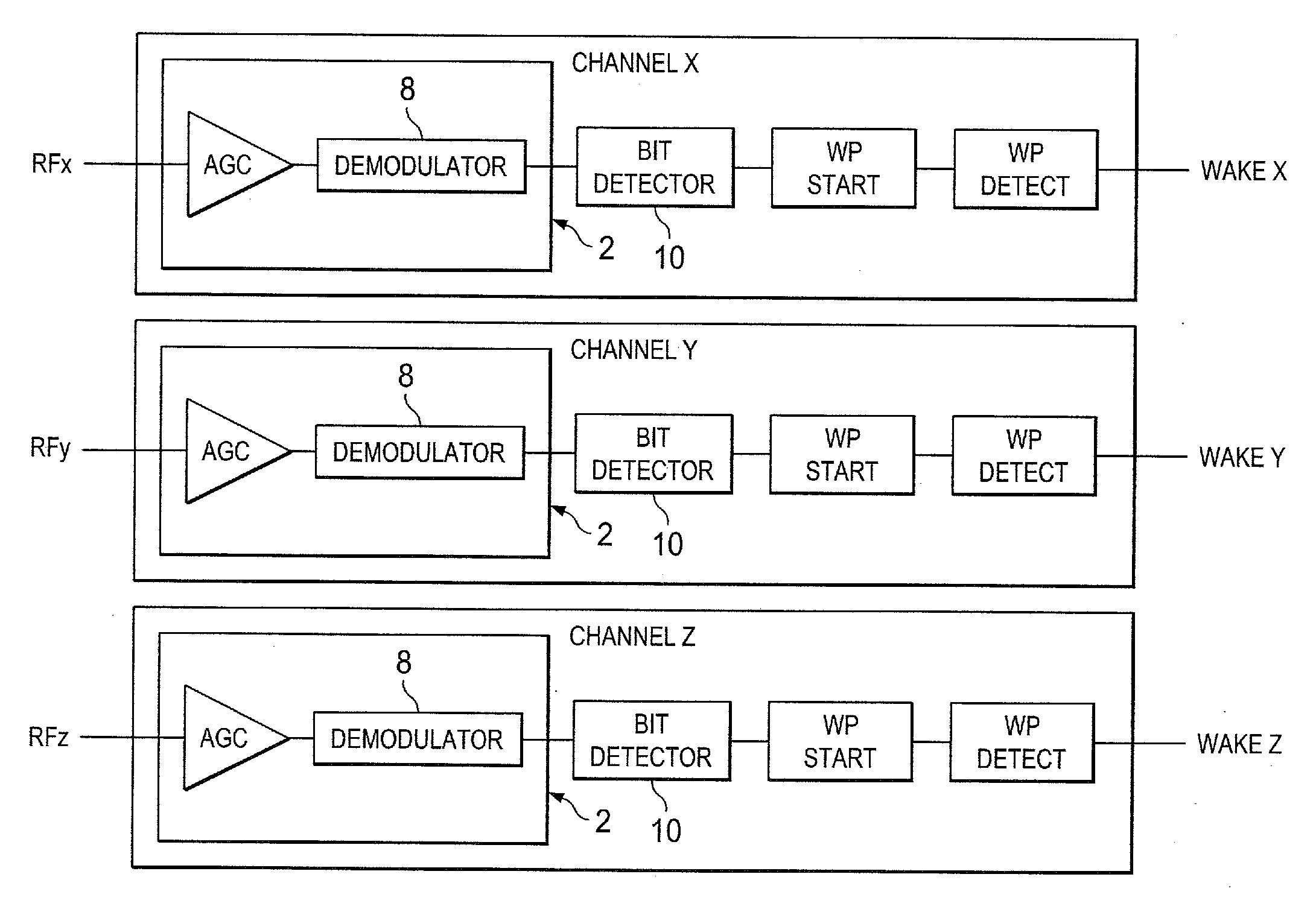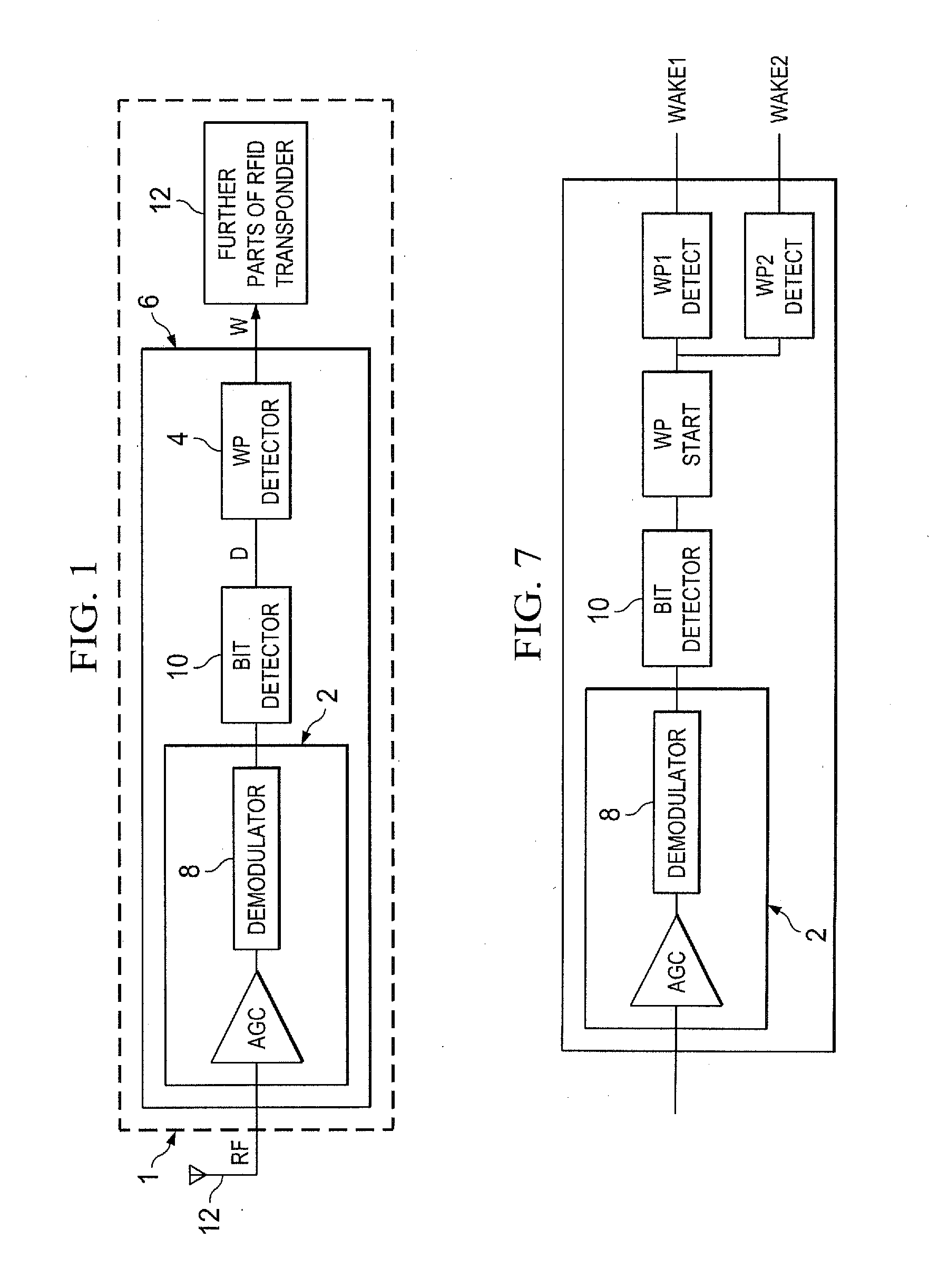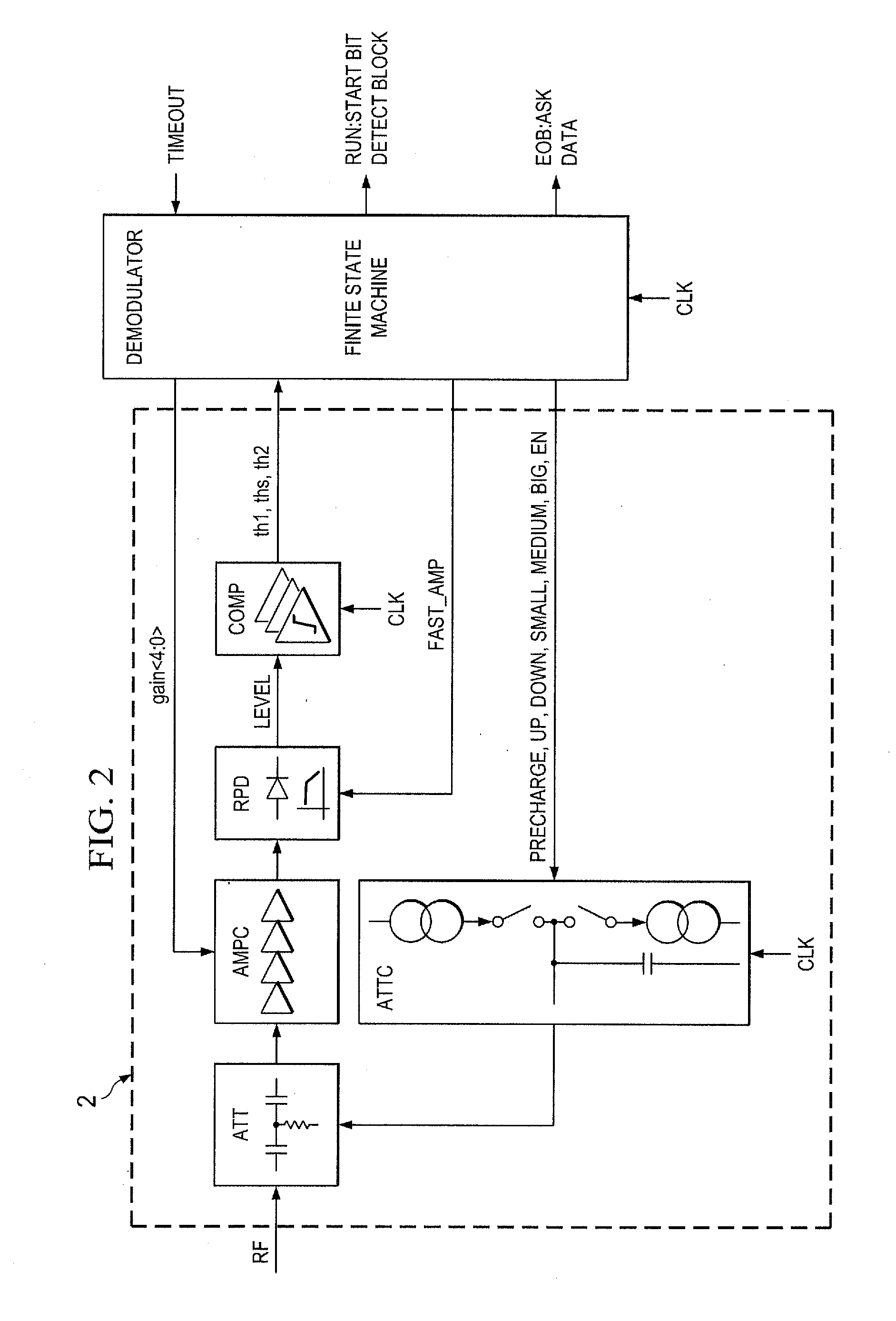RFID transponder and method for operating the same
a transponder and transponder technology, applied in the field of rfid transponders, can solve the problem that the rfid transponder consumes much more power
- Summary
- Abstract
- Description
- Claims
- Application Information
AI Technical Summary
Benefits of technology
Problems solved by technology
Method used
Image
Examples
Embodiment Construction
[0037]FIG. 2 is a simplified circuit diagram for an analog front end 2 is a simplified circuit diagram for an analog front end 2 and a digital finite state machine FSM of an RFID transponder. An RF-signal RF that is received by a suitable antenna is coupled to an attenuator ATT. The attenuated signal is subsequently coupled to an amplifier chain AMPC that is working with a fixed amplification gain. The attenuation factor of the attenuator ATT is controlled by an attenuator controller ATTC. The overall amplification gain of the RF-signal is controlled by controlling the attenuation factor of the attenuator ATT. Since the amplification factor of the amplifier chain AMPC is constant, the total gain for the RF-signal solely depends on the attenuation factor that is the reciprocal value of the amplifier gain. In the following, the term attenuator gain will be used for this reciprocal attenuation factor that is further proportional to the overall gain of the RF-signal. Accordingly, the ga...
PUM
 Login to View More
Login to View More Abstract
Description
Claims
Application Information
 Login to View More
Login to View More - R&D
- Intellectual Property
- Life Sciences
- Materials
- Tech Scout
- Unparalleled Data Quality
- Higher Quality Content
- 60% Fewer Hallucinations
Browse by: Latest US Patents, China's latest patents, Technical Efficacy Thesaurus, Application Domain, Technology Topic, Popular Technical Reports.
© 2025 PatSnap. All rights reserved.Legal|Privacy policy|Modern Slavery Act Transparency Statement|Sitemap|About US| Contact US: help@patsnap.com



